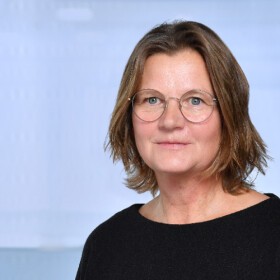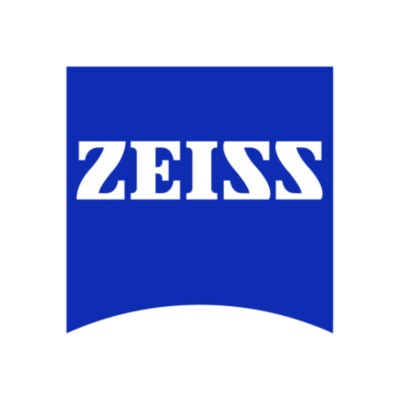Managing Progressive Myopia with Innovative Products, Education, and Training
To support practitioners in myopia management, continuing education and knowledge transfer are essential. With the open website Myopia Insights Hub and a freely accessible foundational course on myopia and myopia management, the ZEISS Education Program for Myopia Management provides exactly that.
Bookmark
Experts estimate that by 2050, half of the world's population could be myopic. Although this information is widely accepted in the field, it is critical that one is not desensitized to the burden, as myopia has a significant impact on the individual and the society. It is therefore encouraging to note that the topic of myopia management is gaining momentum even in regions where the prevalence, particularly for high myopia, is (still) relatively low – such as for example, Europe. Firstly, it is expected that the prevalence will rise here, too, and more importantly, every child and every diopter counts. Tailored solutions are relevant for each individuum, regardless of local prevalence. For this individual myopia management to be successful, parents must be educated, and experts must receive continuous training. How can this be achieved?
1. Involving experts
Myopia not only affects the individuum, but has an immediate impact on the family, and thereafter impacts the wider community and the society. Therefore, it is important the condition is considered from various domains and perspectives and not just from a single point of view such as from a scientific point of view or that of a manufacturer. ZEISS is keenly aware of this responsibility for maintaining the eye health of our children and is therefore open to diverse perspectives on the problem. The company therefore founded a Myopia Advisory Board. Relevant perspectives for basic and application-oriented research are thus increasingly integrated into the innovation processes. Currently, there are 15 external experts from academia, industry and clinical practice who independently evaluate developments at ZEISS and provide advice on various aspects of myopia management.
The chair of this advisory board is Padmaja Sankaridurg, Head of Global Myopia Management for ZEISS and Conjoint Professor at the School of Optometry and Vision Science at the University of New South Wales, Sydney, Australia. She has been researching myopia for over two decades and was a member of the International Myopia Institute's board until 2023 and currently serves as an Industry board member on IMI board. Together with the Myopia Advisory Board, she develops the strategic direction of myopia management at ZEISS.
2. Education for eye care professionals
Progressive myopia is not yet fully understood in all its facets. To support practitioners in myopia management, continuing education and knowledge transfer are essential. With the open website Myopia Insights Hub and a freely accessible foundational course on myopia and myopia management, the ZEISS Education Program for Myopia Management, ZEISS is achieving exactly that - independently of products. ZEISS now shares knowledge not only at conferences and professional events but also through new online offerings that are time- and location-independent. The Myopia Insights Hub, a kind of news and professional website for myopia that went live in April 2024, features regular new articles and an up-to-date overview of relevant scientific publications. The entire Myopia Insights Hub is fully available in English and Portuguese, and partially in German and French. Additional languages are in development and planning. The ZEISS Education Program for Myopia Management is accessible through the Hub and consists of five freely available units that grant everyone access to state-of-the-art myopia knowledge, partly presented by Prof. Padmaja Sankaridurg, currently available in German, English, Italian, and Vietnamese.
3. Educational efforts for parents and their children
Additionally, ZEISS is continually expanding its knowledge services for parents with affected children who are particularly interested in this topic. This is important because Google is often the first point of contact for concerned parents. Finding valid and verified content is not a given. With the help of currently three consumer texts optimized for search engines, ZEISS content already addresses many questions and is reviewed at a high professional level by staff from the ZEISS Vision Science Labs amongst others.
A special focus of the texts lies on prevention. There are demonstrably very simple behavioral patterns that help positively influence the onset of myopia or slow its progression: spending more time outdoors and putting down the phone more often. Important: All web content should always clarify: Please consult an expert with your children! The included “Optician finder” on all ZEISS consumer websites and various references ensure this is emphasized in all ZEISS articles on myopia. For local markets, ZEISS has also published a printed flyer for parents that conveys the most important information in an understandable manner. It is available through partner eye care professionals and includes general definitions, information on causes, prevention, and provision of special solutions.
4. Tailored, reliable products
For more than 20 years, ZEISS has been involved in research and myopia management, particularly in Asia, where myopia has reached epidemic proportions. ZEISS is working to offer effective and tailored solutions. Recently, this was achieved with the launch of ZEISS MyoCare lenses, which have been proven to significantly slow the progression of myopia compared to single vision lenses. This is supported by data for Asian and Caucasian children. In Asian children, after twelve months of wear, ZEISS MyoCare slowed myopia progression on average by 0.31 D and 0.13 mm and ZEISS MyoCare S lenses slowed myopia progression on average by 0.29 D and 0.11 mm, compared to ZEISS single vision lenses. In Caucasian children, compared to ZEISS single vision lenses, use of ZEISS MyoCare lenses for six months resulted in a reduction of myopia progression by an average of 0.15 D and 0.07 mm.
ZEISS MyoCare lenses incorporate C.A.R.E.® technology (Cylindrical Annular Refractive Elements) for the management of progressive myopia. Around the center of the lens with far distance correction, the functional zone incorporates almost invisible concentric circles with alternating defocus and correction zones in a ring like pattern expanding towards the periphery of the lens. The myopic defocus which is achieved in this way has been shown to effectively delay the growth of the eye's length beyond that which is physiologically normal, thus slowing down the progression of myopia. ZEISS MyoCare S lenses have a slightly larger central clear zone and less mean additional surface power of the annular elements. In November 2024 a scientific, peer-reviewed paper has been published showing the efficacy of the C.A.R.E. technology underlining reliability of the ZEISS lenses.
Your contact person


